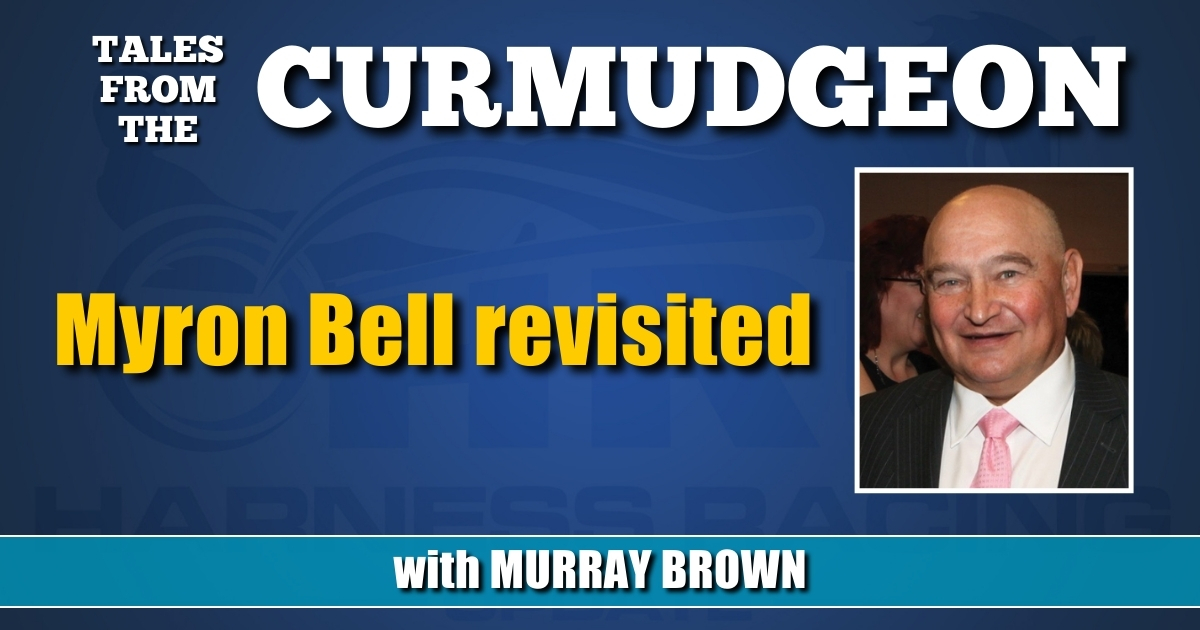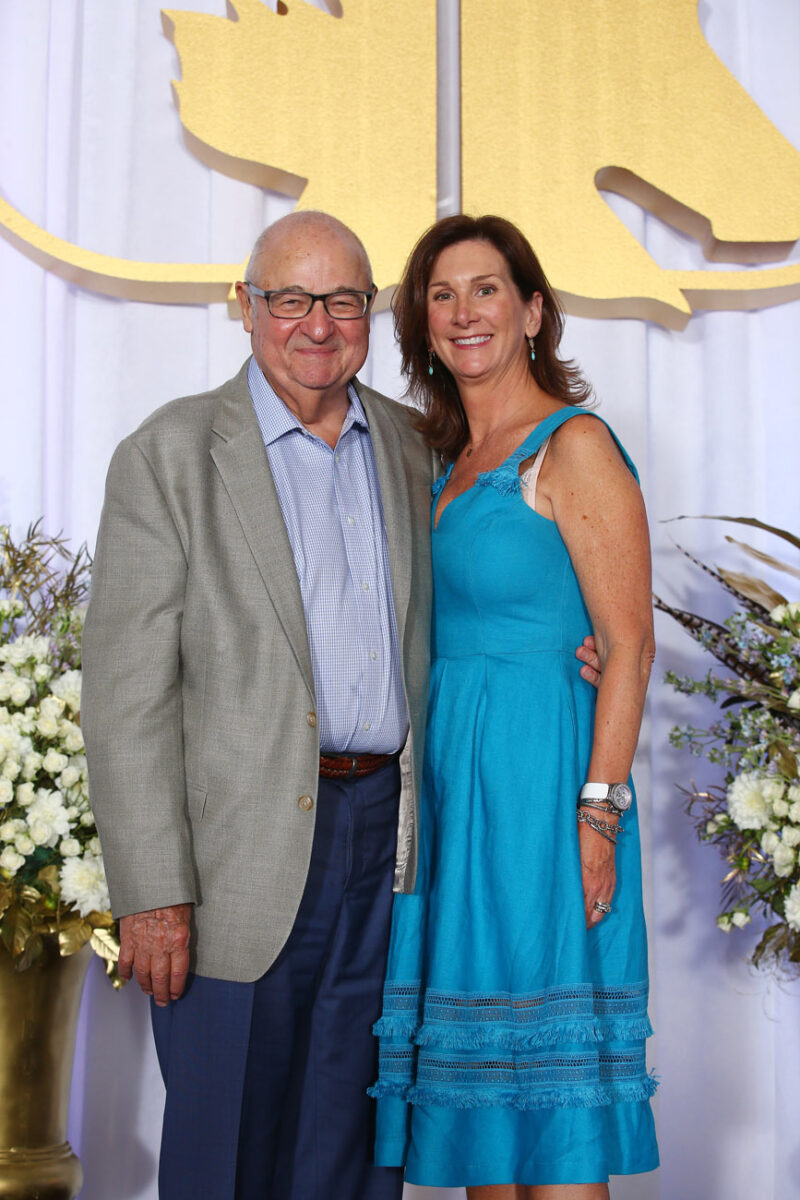Myron Bell revisited
by Murray Brown
Myron Bell is now reaching the stage of his often-glorious career in harness racing, where he might be looked upon as being an elder statesman. You would never know it by speaking to the about to be 83-year-old.
“I awake each morning looking forward to the day that lies ahead,” Bell said. “I believe I have lived a well-balanced life, mostly guided by a passion to my family and to harness racing, the vehicle which I believe has allowed me to become successful in this game called life.
“I have lived to this age in reasonably good health because I want to be there when my grandkids grow up to become the great successes that I envision them becoming and the horses which I have bred and helped to develop become the champions that I feel some will become. I like to think I take good care of both my body and my mind on a daily basis. I exercise, usually with an early morning swim every day. I read, beginning with the New York Times on a daily basis. Reading a newspaper like the Times is not only of great importance to the mind in the information it imparts to the brain, but it is perhaps more important in that it creates incentive to explore areas of which I have little or no knowledge and of my need to learn. I like to think that no day goes by where I have not learned something that I didn’t previously know. One of the sections in the Times that I explore are the obituaries, not only to find out which luminaries have left us, but perhaps more importantly to explore the lives of some that might be unfamiliar to me and to add to my knowledge of those who made enough of an impact on our lives to be recognized, even in death by the New York Times.”
This column purports to be about harness racing, its horses and its people. You have been in the game since the mid ’60s. You owned your first horse in 1968. You bought your first yearling in the ’70s. Since then, you have owned, managed, bred, raised and raced likely hundreds of others. Your enthusiasm for the sport has not wavered. If anything, it has grown and increased. I’m playing off the name from Budd Schulberg’s best seller “What makes Sammy Run?” known mostly to fellow octogenarians, to ask, what makes Myron run?
“That is both an easy and a difficult question. There is no set answer. The simple one would be that success breeds success. How many are too many great horses? It’s an undefinable answer. The truth is probably that there are never enough. Once you’ve bred or owned the great one you are always looking for one even better. That is what keeps me going.”
You mention the word “bred.” You’ve spoken to me about having more of an interest in recent years in breeding than in racing. Is that so?
“To some degree I suppose it is. My wife Stephanie and I now own all or parts of 15 mares which we will be breeding to various stallions this year. Our latest broodmare acquisition is Sam Bowies’s great mare Hot Mess Express which we bought from Sam this past year. We will be breeding her to Captaintreacherous this season.
“Each year we look forward to their foals, raising them and consigning them as yearlings to the Lexington Selected Yearling Sale under either the Brittany or Hunterton banner.
“That is not to say that I have lost interest in racing. Far from it. Stephanie and I presently own an interest in 11 horses in training’ eight now 2-year-olds and three 3-year-olds. We’ve had our success in racing. We’ve also had years where we did not do near as well as we hoped or expected to. Ironically, this past racing season was not a very successful one, yet from a financial standpoint, we probably did as well or even better than ever before.
“The reason we did so well is that we sold three of our best-bred race fillies, Boudoir Hanover, Bellisima Hanover and Don’t Fence Me In for a good seven figure number to Steve Stewart and partners. I’ve been extremely fortunate in that in addition to George Segal and Tony Alagna of course, I’ve had some great partners and associates including, but not limited to Judy Chaffee, Larry Denley, Steve Head, Daniel Plouffe and Robbie Pryde.
“If I were an extremely wealthy man, there probably would be no way I would part with mares of that quality for just about any price. However, I am not near that wealthy. I recognize that I am not able to continue doing what I love without recognizing the financial realities involved with the sport. But money is not what drives me, the desire to become successful does far more.”
Through the years you have been associated with numerous trainers with varying degrees of success. For the last 15 years you have hitched your wagon exclusively with Tony Alagna.
“Tony was working as a second trainer for Erv Miller with whom I had horses at the time. I was extremely impressed by Tony, firstly by his horsemanship, but also by his exceptional ability to communicate with both the owners and the employees in the stable who were mostly from Guatemala and of course spoke Spanish in which Tony is quite fluent. It is now 15 years later. We have both grown, although I not near as much as Tony has especially in his accomplishments where he has become one of our sport’s great trainers.”


















